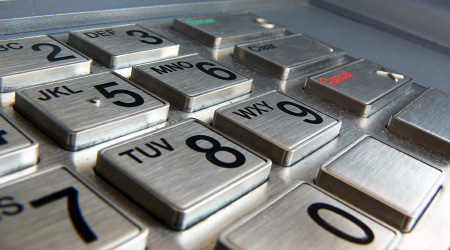What Services Do Modern Banks Offer?

When it comes to providing financial services to the public there is virtually nothing banks do not offer consumers. Competition has increased the need for banks to expand their list of available services but technology has also played a part in developing tools which were not feasible decades earlier. Automated teller machines, online banking, electronic statements and many other services are a direct result of advances in systems related to or reliant on the Internet. Banks have never offered as many options as they do today and as consumers become more sophisticated so do the financial services they rely on.
Accounts
Everyone is familiar with checking and saving accounts which are used to build pay bills and build emergency funds but there are other types of accounts as well. Money market accounts can be used to earn a little more interest than a savings account. Individual Retirement Accounts and Certificates of Deposit are variations of standard accounts with certain benefits and limitations. College savings accounts such as 529 plans can be used to set aside money for a child's education. Business accounts can help maintain separate entity status between personal and corporate finances. If you need an account for a specific reason, it's likely your bank or credit union offers something which will fill the requirement.
Loans
Banks make money by taking demand deposits for different types of accounts and then using that money to extend loans to consumers. This has been a business model in existence for the entirety of every financial system in history. What has changed is the type and variety of loans on offer today. Mortgage and auto loans are fairly common and well understood by consumers. New types of loans include home equity lines of credit, unsecured signature or personal loans, small business loans and deposit advance loans. The variety of loans is meant to fill the needs of many consumers with different credit histories, income levels and borrowing requirements.
Cards
Magnetic stripe plastic cards were invented in the 1960s and became widely adopted in the decades since. They have been used for a number of different functions and will continue to adapt as technology advances. Initially, automated teller machine cards allowed consumers to access their funds outside of normal banking hours. As networks were created and retailers became more comfortable with electronic forms of payment additional types of cards were created. Credit cards increased in use in the 70s and 80s followed by debit cards and more recently smart cards. It's almost become a cliche to write a check or pay with cash since some form of card-based transaction is supported universally in the United States and the world.
Online Banking
A fundamental change in the banking relationship between financial institutions and consumers is directly tied to advancements on the Internet. Online banking allow consumers to conduct almost all business necessary from making wire transfers to paying bills online. Banking customers are able to view and print electronic statements, make credit card payments, apply for a mortgage, monitor and adjust investment portfolios, request a replacement credit card or ATM card, ask a question for customer service and virtually anything else you can think of that would normally be handled in a banking branch.
Investments
Typical banking functions like extending a mortgage loan and transferring money between accounts will only get banks so far in terms of revenue and staying competitive. A more recent development has been offering investment services administered by third parties. Some banks will offer a wide variety of investment services that they manage themselves and offer in conjunction with other companies. These services include annuities, retirement planning and access to stocks, bonds and mutual funds. Investment services were not typically offered by banks but by partnering with mutual fund companies and brokerage firms, they provide an opportunity for consumers to conduct all other financial business in one location.
Merchant Services
All information thus far has focused on business to consumer services such as opening a savings account or requesting a credit card but businesses require many of the same services. Merchant service accounts allow businesses to function in much of the same way as standard consumer accounts with the addition of processing credit card orders and receiving small business financing. As technology continues to advance, it is likely additional services will be offered by modern banks blurring the lines even more between the multitude of financial institutions.
Elsewhere on StockMonkeys.com







